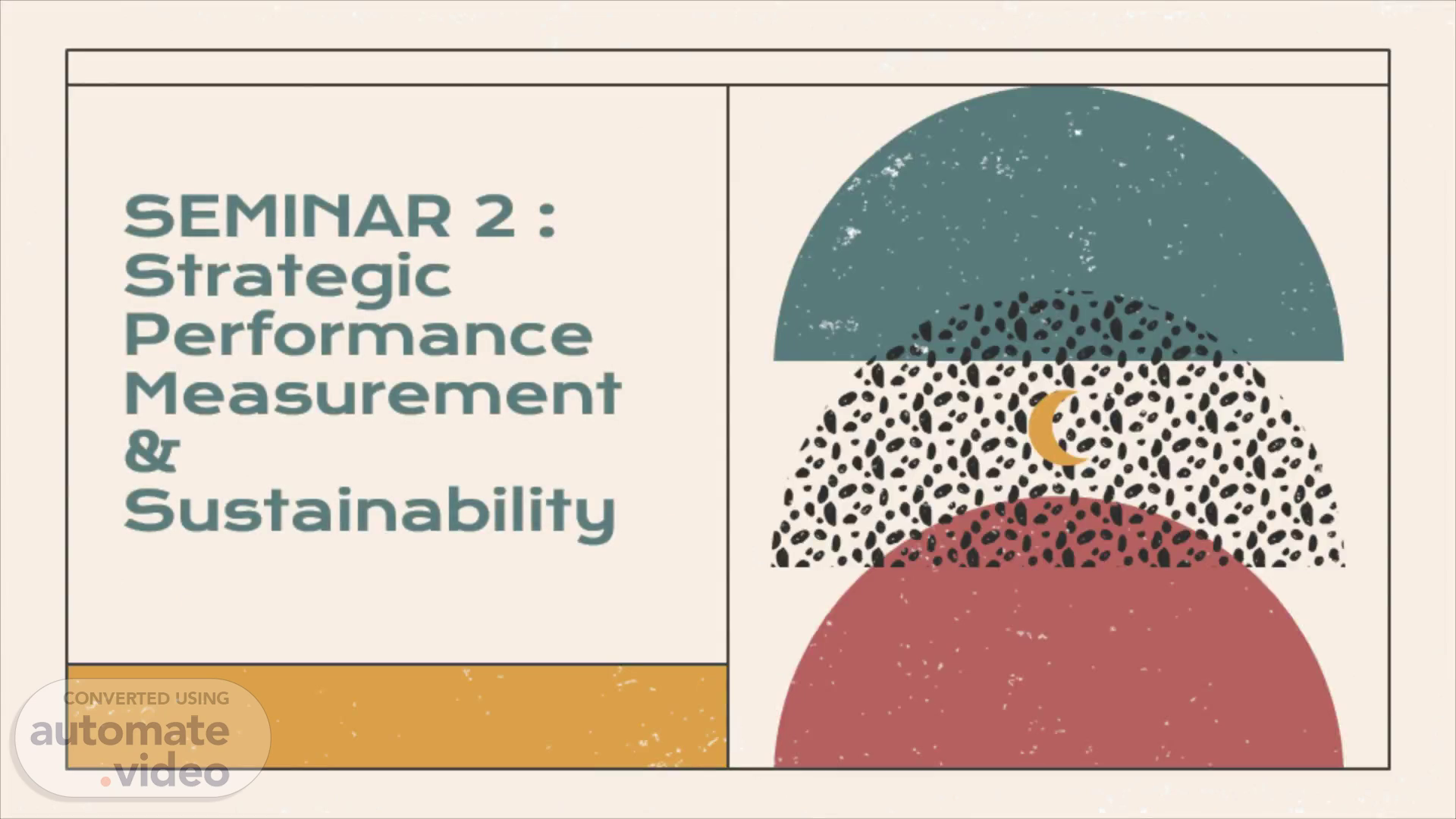
Page 1 (0s)
SEMINAR 2 : Strategic Performance Measurement & Sustainability.
Page 2 (14s)
2. Azleena Abd Samad 2017350205. Presenter:. Mohammad Haizamin 2016873206.
Page 3 (36s)
R evenue & cost. 01. More focus on profit and components.
Page 4 (2m 52s)
To assess the activities that organisations regard as important to the achievement of their strategic objectives.
Page 5 (4m 26s)
Assist in management intangible asset, business reputation & employee qualities.
Page 6 (5m 10s)
TYPE OF NFM’S. Company Image. Set non-financial performance measures that will protect the brand.
Page 7 (6m 44s)
THE BALANCED SCORECARD. (BSC).
Page 8 (6m 51s)
strategic management performance metric used to identify and improve various internal business functions and their resulting external outcomes. It was used to links a vision to strategic objectives, measures, targets, and initiatives and provide feedback to organizations. It also common among companies and part from of the organisation’s planning cycle. It was created to help businesses evaluate their activities with more than just a straight financial eye using revenues, costs, and profits..
Page 9 (7m 37s)
Measures include customer profitability, market share, number of new customers.
Page 10 (8m 48s)
BENEFIT & CHALLENGES OF BSC. CHALLENGES. Balanced scorecards require managers and team members to report information, which means logging data..
Page 11 (10m 3s)
BSC’S LEAD AND LAG INDICATOR. What are lead & lag indicators?.
Page 12 (14m 6s)
NON-FINANCIAL MEASURES LEAD TO FINANCIAL MEASURES.
Page 13 (14m 58s)
How to Continuous Improvement to Remain Sustainable?.
Page 14 (16m 23s)
How to Continuous Improvement to Remain Sustainable ?.
Page 16 (17m 58s)
TYPES OF BENCHMARKING. PROCESS BENCHMARKING FUNCTIONAL BENCHMARKING COMPETITIVE BENCHMARKING INTERNAL BENCHMARKING.
Page 17 (18m 35s)
1. Set the objectives and identify area that have problems.
Page 18 (19m 23s)
Enable a mindset and culture of continuous improvement Develop a standardized set of processes and metrics 3) Gain an independent perspective about how well you perform compared to other companies.